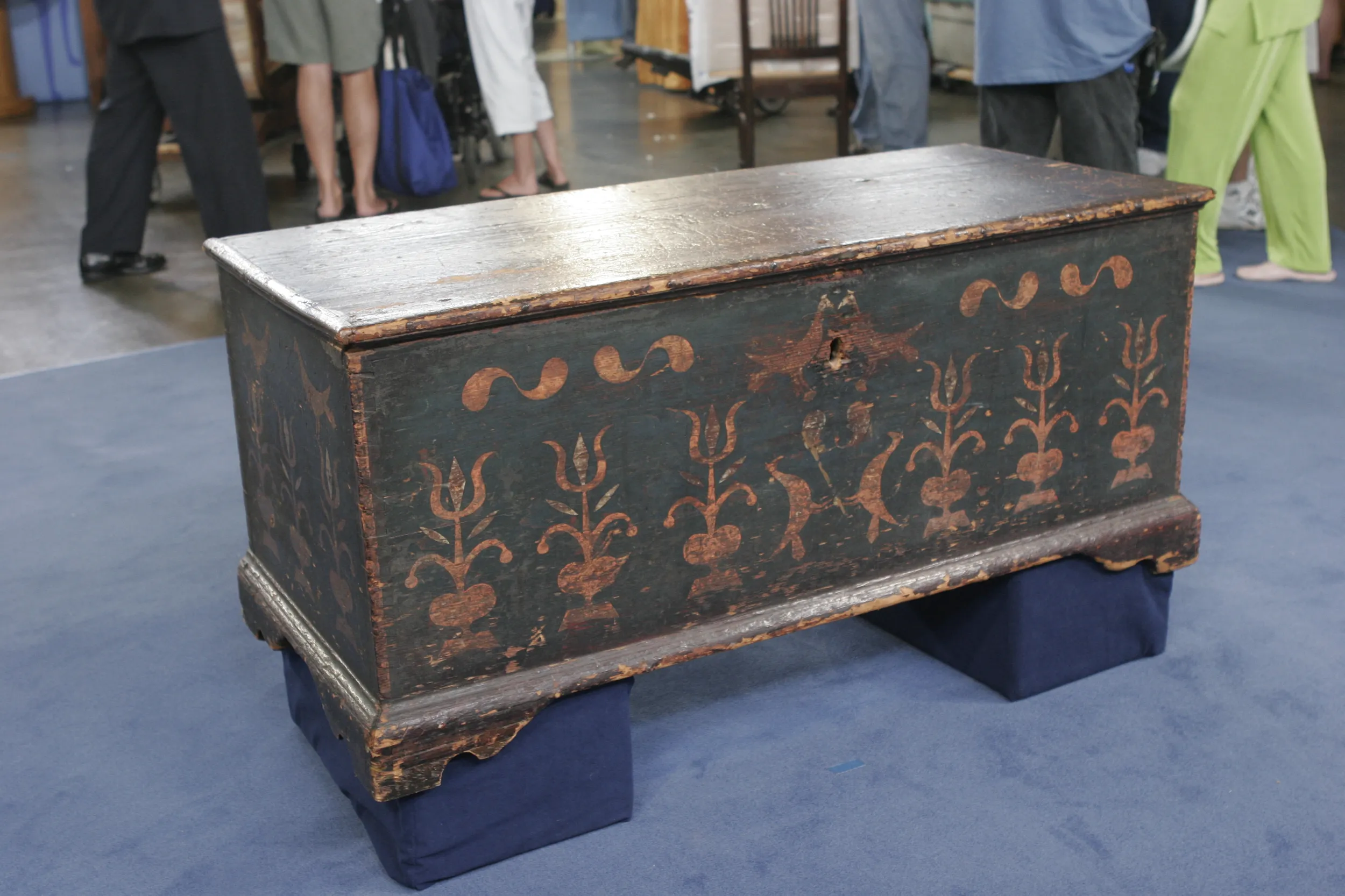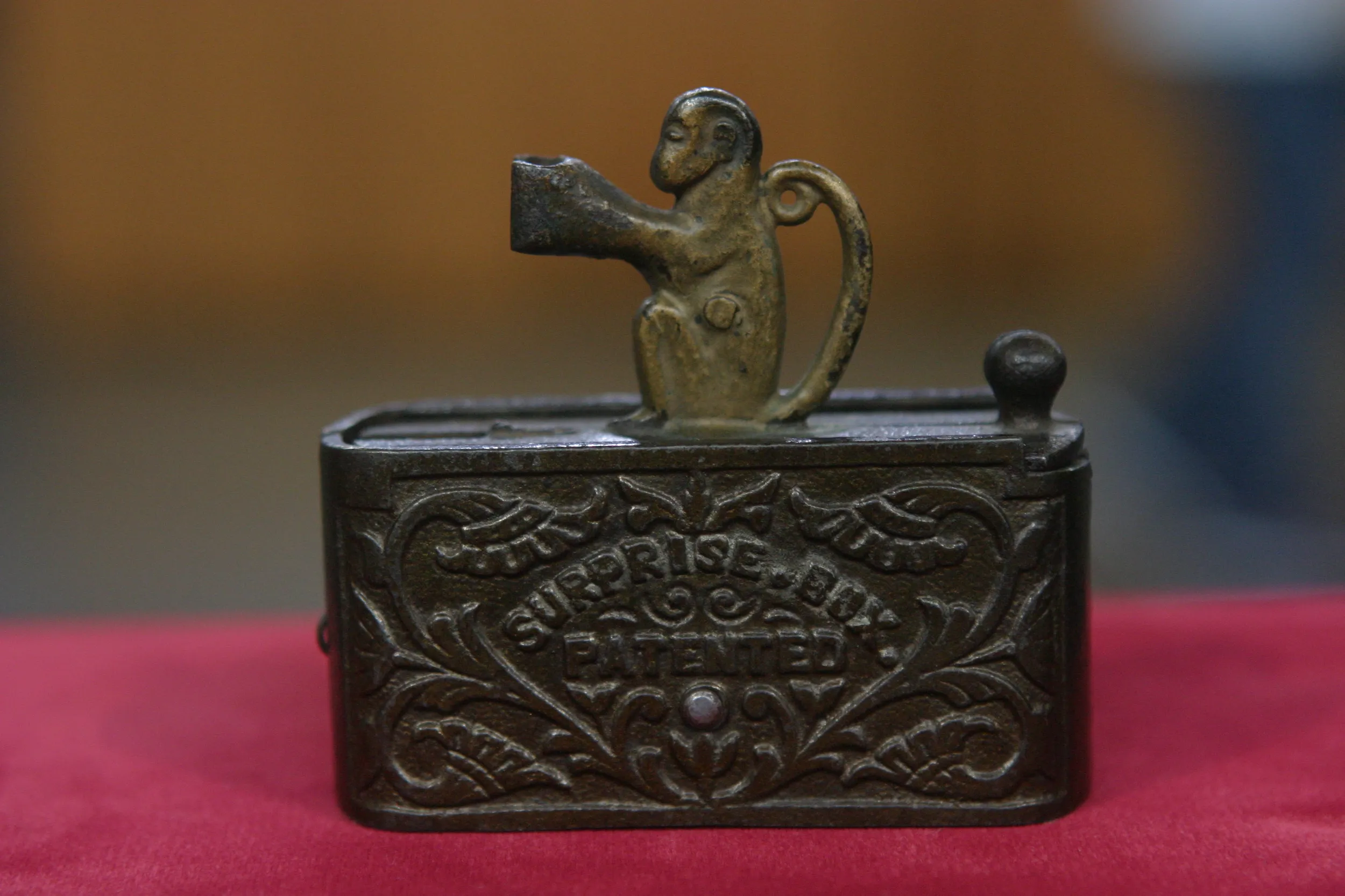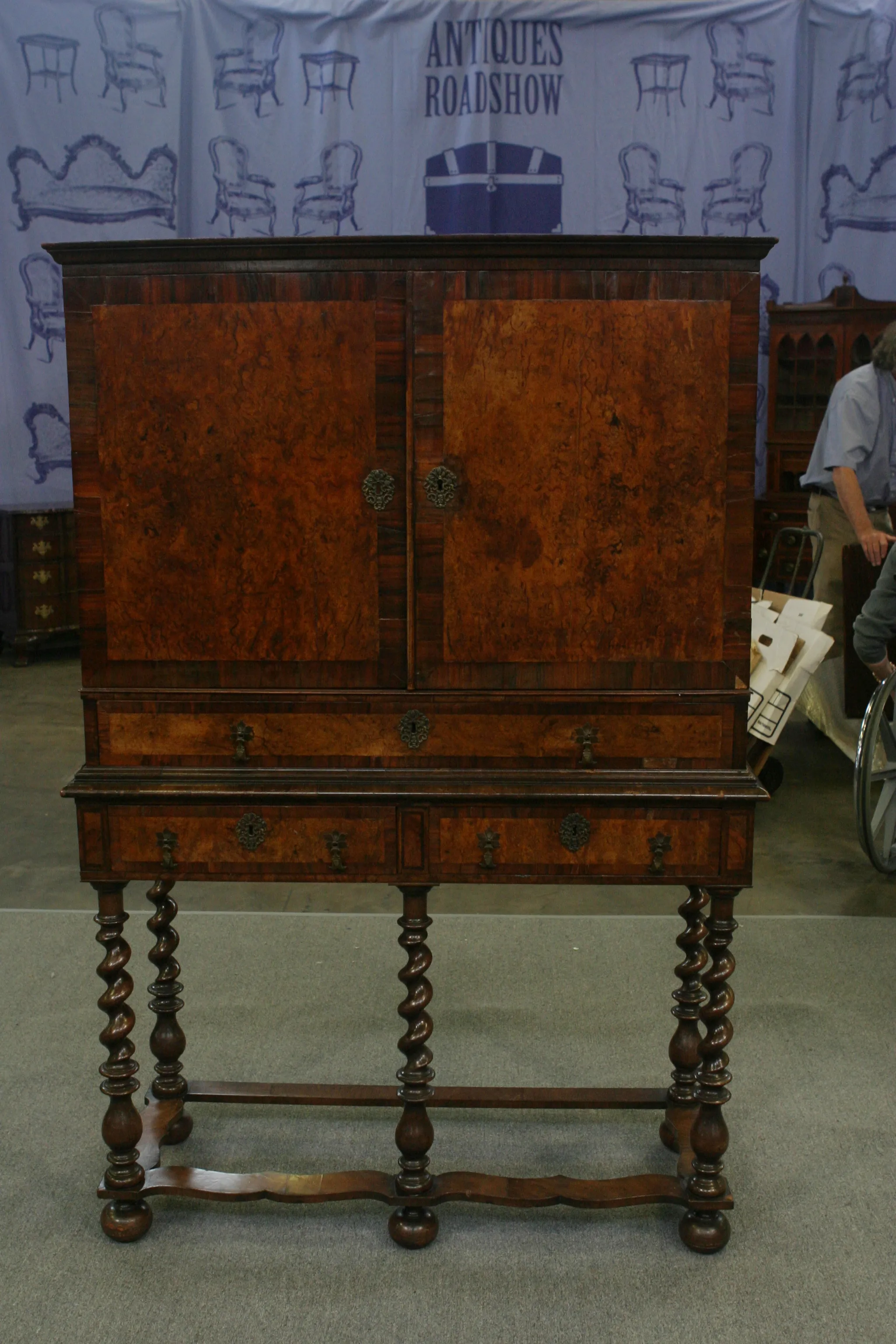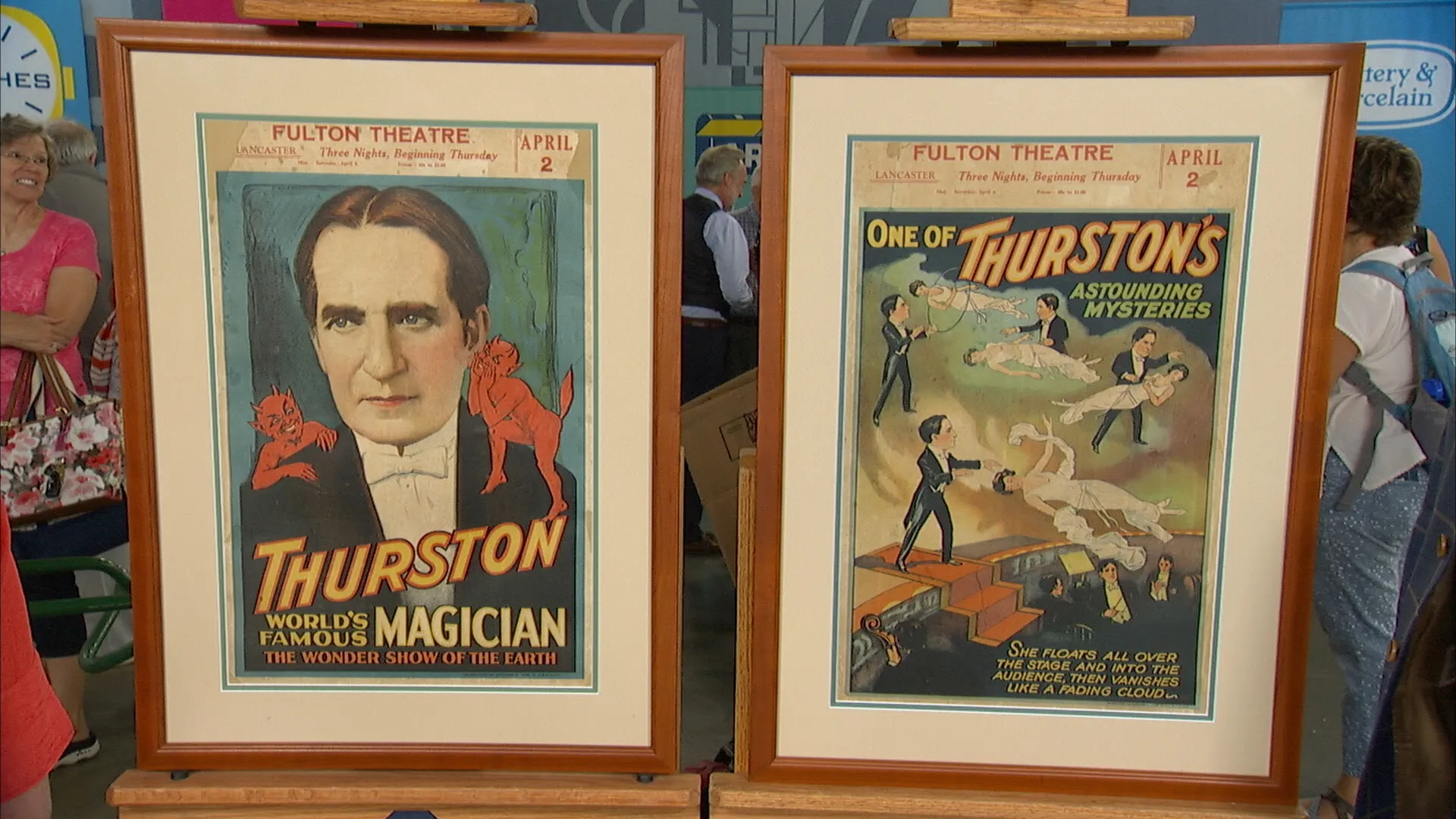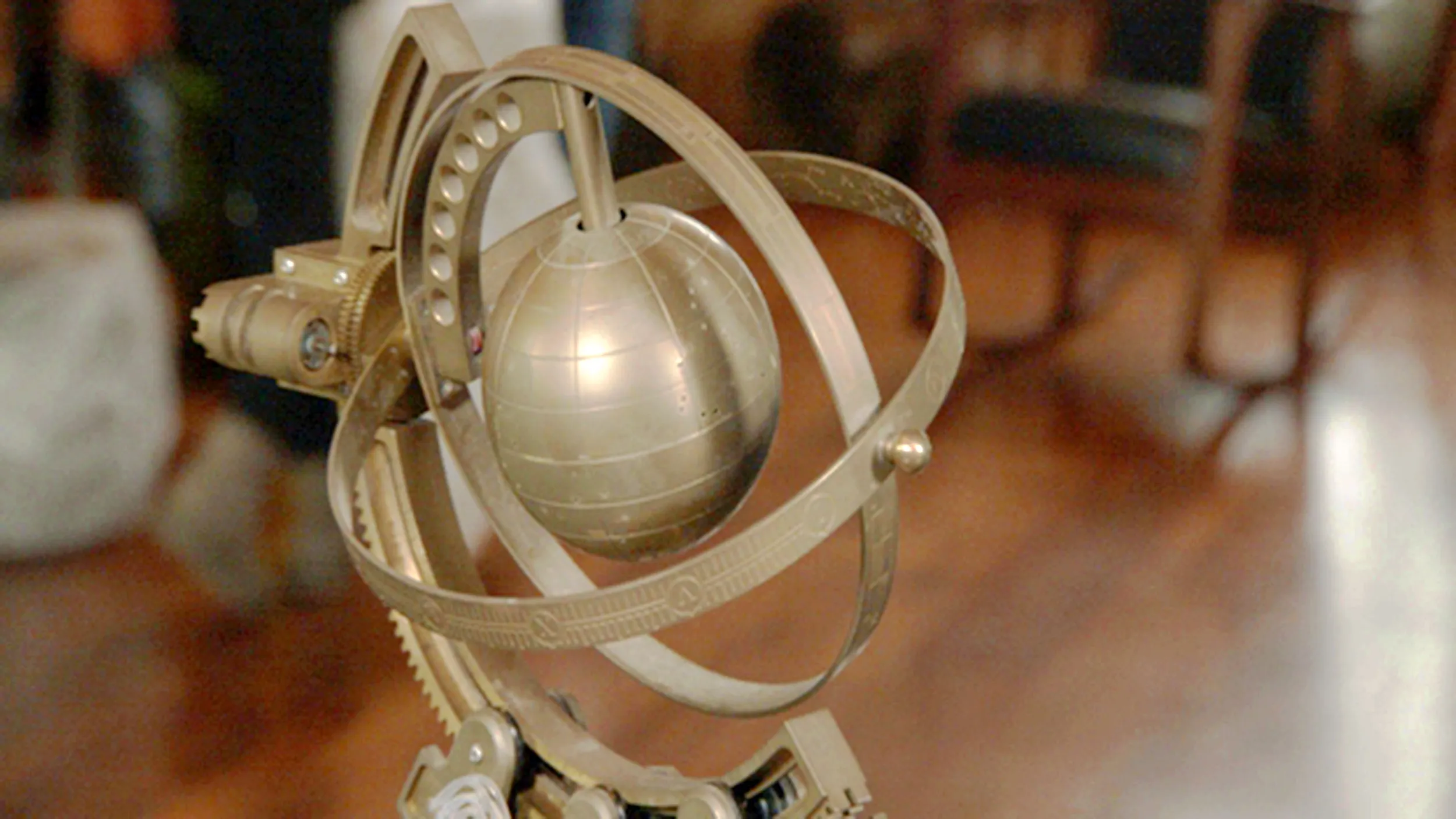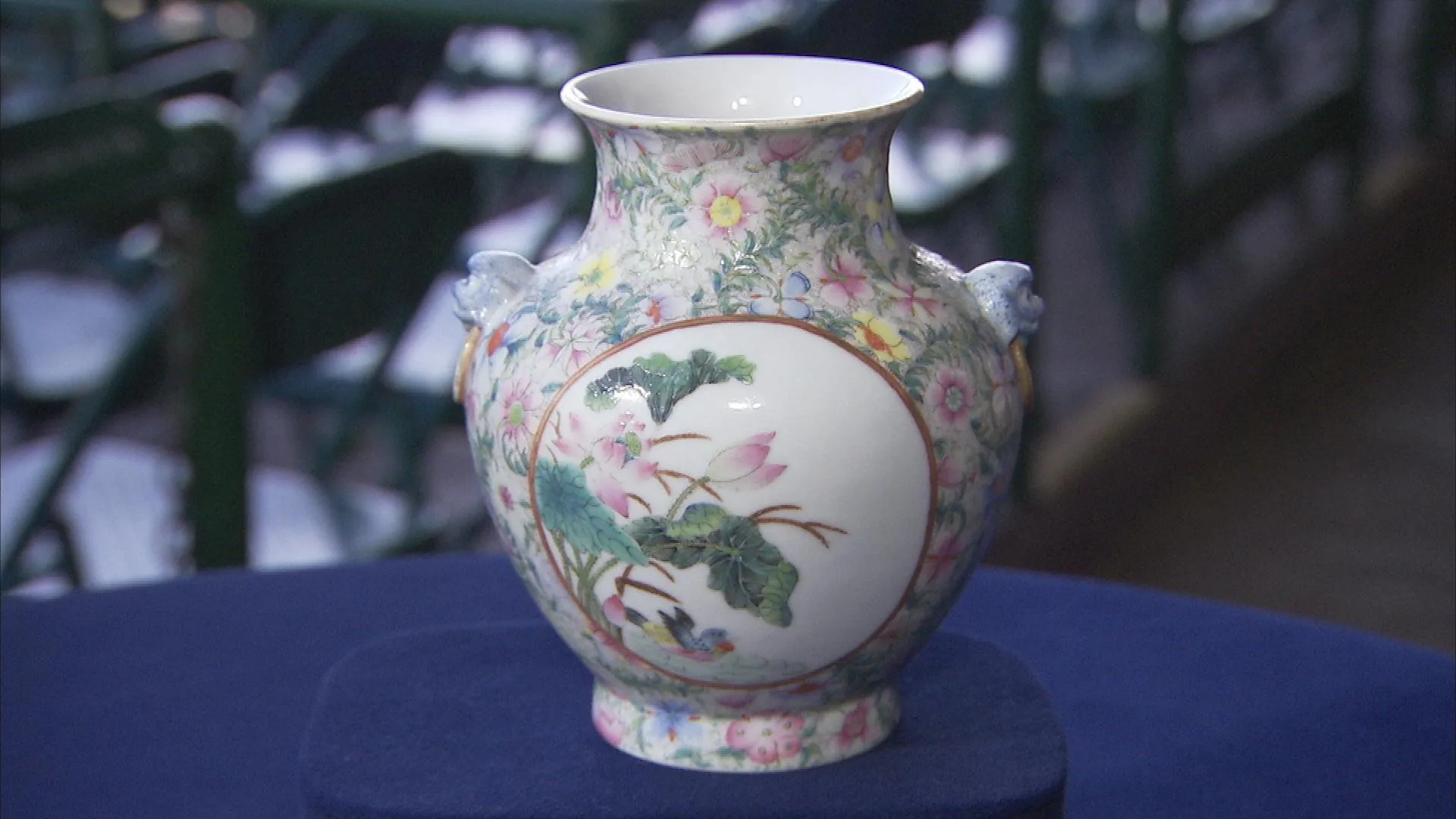GUEST: My husband and I were doing some antiquing along the coast. We just walked into a mall, and the lady had put this out. Didn't have a price tag on it. And I'm trying to develop an eye for antiques, and I thought, "Maybe this is a good one." So we talked about it for a few minutes and agreed on a price and I bought it.
APPRAISER: And how much did you pay for it?
GUEST: I paid $180.
APPRAISER: When you walked in the line, the first thought that ran through my mind was, my friends on the ROADSHOW are always talking about condition, and how something would be worth a lot of money if it had its original paint. And I looked at this chair and I jumped a little bit, because this is what it's all about. This is original paint. It's extremely rare. This is a Federal chair made in Massachusetts, probably around 1800 to 1810. In the Federal Period, American craftsmen were actually trying to survive by not only selling furniture locally, but also exporting it out into the American South, into South America, and abroad. And the only way they could really survive in business was by making furniture very quickly. It was a market economy, and you can see these red paint lines that go down the side here-- it's imitating inlay, and in the Federal Period, the emphasis is on inlays and flat veneers. But this was a very quick way to get the glorious effect of vibrant colors and very fashionable designs, just quickly painted on the surface of a chair. There's an added feature here. The slats of the seat chair bottom are dovetailed into the seat frame, so even though the emphasis was to make chairs quickly, there was still a little bit of the old Yankee, you know, "I can make this chair and it's going to be great and it's going to be well-made." And it's typical of the work of Samuel Gragg and other Massachusetts chair-makers at that time. Because of its condition, this wonderful-- it seems a little worn in places-- but this wonderful color, this little fading out of the blue on the seats, the wonderful seashells on the crest-- because of this condition, this chair is worth in the neighborhood of $3,000.
GUEST: Whoa! Whoa! That's great.
APPRAISER: So, congratulations, it's a wonderful vestige of the American Federal Period.
GUEST: Thank you very much.
APPRAISER: Thanks for coming in.
GUEST: Uh-huh.


